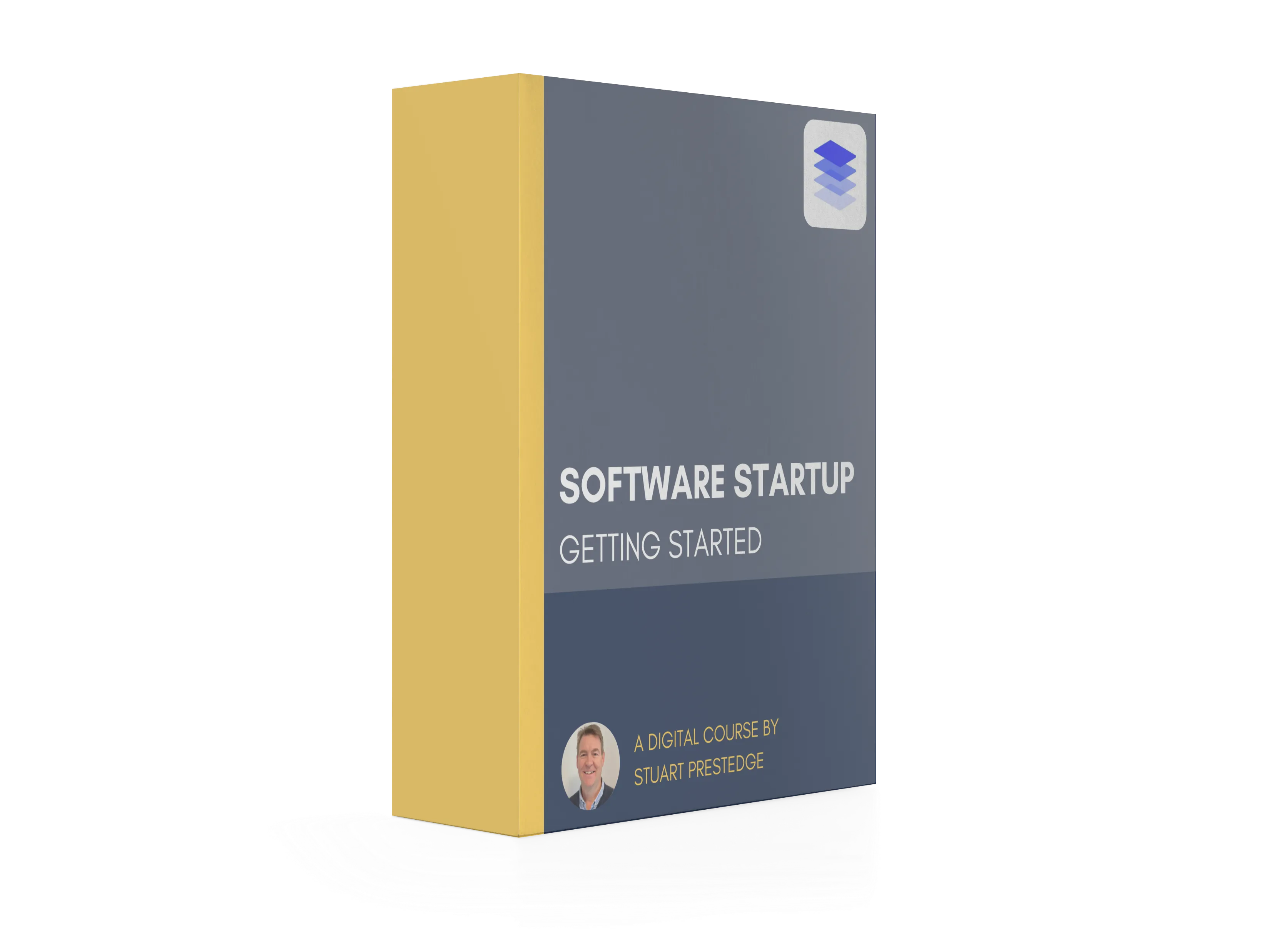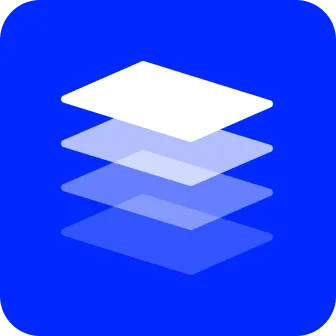Software Startup - Getting Started
Learn how to get started turning your idea into a software product and startup business!
Save thousands of dollars by taking the important steps and doing them properly to lay the foundations for your successful startup.
This course includes:
2.5 hours of video lessons
18 document templates
Certificate of completion
What You Will Learn
The research and analysis you need to do into your potential market and competitors.
The big decisions you need to make such as your partnership and funding strategies.
Getting your business up and running.
How to create the documents you need in order to communicate your idea to others such as investors and customers.
How to create the documents you need in order to get your software designed, built, tested and launched.

Course Created by
Stuart Prestedge
Stuart has over 30 years of experience creating and exiting software startups and helping other founders create their own startups.
Course Curriculum
This is exactly what will be covered in this course
-
Topic 1: Current employment
-
Topic 2: Market research
-
Topic 3: Competitive analysis
-
Topic 4: SWOT analysis
-
Topic 5: Partners
-
Topic 6: Investment
-
Topic 7: Elevator pitch
-
Topic 8: Business basics
-
Topic 9: Getting legal advice
-
Topic 10: Plan of action
-
Topic 1: Brain dump
-
Topic 2: Document register
-
Topic 3: Question register
-
Topic 4: Solution overview
-
Topic 5: Users & organisations
-
Topic 6: Concepts document
-
Topic 7: User stories
-
Topic 8: Milestones
-
Topic 9: Platforms
-
Topic 10: Notifications
-
Topic 11: Requirements
-
Introduction to User Experience Design
-
Introduction to User Experience Design
-
Introduction to User Experience Design
-
Introduction to User Experience Design
-
Introduction to User Experience Design
-
Introduction to User Experience Design
What you can, cannot, should and must do if you are currently employed.
03:40
How to research the market you are planning to enter so you are better placed to start your market fit.
03:50
How to find out about your potential competitors to help make business and product decisions.
06:20
Succinct instructions and a worksheet for identifying and using your strengths, weaknesses, opportunities and threats.
02:15
Should you go it alone or work with one or more partners? This topic discusses this important decision in depth
06:40
Do you need investment (or other form of funding)? This topic helps you decide and shows you how to get started with this.
06:15
An elevator pitch is so important to get right yet so many don't. This topic shows you the formula for creating a great pitch.
02:45
There's a lot to do setting up your business. This topic takes you through the main steps, showing you what, why and how.
16:30
You will most likely need legal advice for various things. This topic explains this and how to prepare for getting that advice.
05:30
Creating a plan of action is so important yet rarely done. Use the template to create yours so you can stay on top of everything you need to do.
01:30
Have fun creating a brain dump of all your thoughts, ideas and questions. Then use this to start structuring your business and software documentation.
03:15
You will create many documents which maximise your chances of success - as well as keeping costs down. Keep track of these with a document register.
02:25
There will be a lot of unanswered questions and unmade decisions initially. That's OK - especially if you track them properly with a question register.
03:50
Although easy to write, this is a very important document, used for many purposes to communicate your idea with investors, customers, partners, developers and more.
03:20
Your software will almost certainly have users and may have the concept of organisations. Lay firm foundations by defining these properly.
09:00
Not often written, this document gives you a glossary and explains all the concepts of your product, saving on miscommunications and inefficiencies that will arise without it.
04:55
A really easy way of defining what your software needs to do. This topic shows you how to do this properly so your software contains everything you need.
02:20
There will be more than one version of your software as it evolves. Keep track of these and communicate properly with all stakeholders.
02:45
Web-only? Mobile-only? Both? It is critical to decide where you will start and the details of this. This important topic shows you how.
06:50
Learn how to specify exactly what notifications you want in your software. Get this often missed step right from the start.
10:00
This is the culmination of all the work done up to now to create your comprehensive functional requirements document using the extensive templates provided.
37:00
Write a very short description about the lesson here so that your visitors know what they are going to learn in this lesson.
05:00
Write a very short description about the lesson here so that your visitors know what they are going to learn in this lesson.
05:00
Write a very short description about the lesson here so that your visitors know what they are going to learn in this lesson.
05:00
Write a very short description about the lesson here so that your visitors know what they are going to learn in this lesson.
05:00
Write a very short description about the lesson here so that your visitors know what they are going to learn in this lesson.
05:00
Write a very short description about the lesson here so that your visitors know what they are going to learn in this lesson.
05:00
Description
This course will help you get started with your software startup. If you just have an idea or you've started already, it will ensure you take all necessary steps helping you move towards launch and success quickly, potentially saving you thousands of dollars in mis-steps and wrong turns.
Requirements
-
Anyone with an idea who wants to create a startup
-
No funding is required
-
No prior experience creating startups is required
-
You just need a browser and the desire to succeed!
Testimonials
Here's what people are saying

Alex Buick
Founder
InstaDoc
“I'm a non-technical founder and the S5 Methodology encapsulates Stuart’s 30 years of technical knowledge. I love how it takes you through step-by-step covering everything that's needed. It’s incredibly useful and made me feel like I'm in control - I could see the roadmap ahead of me. It enabled me to work in an organised fashion, making sure nothing was missed out. If I hadn't done this, I wouldn't be where I am today with my startup. I could've had lots of problems on the way and I think this has saved me a lot of money. I would definitely recommend it! My advice: think about what you are planning to create and use the S5 Methodology.

Chris Cragg
Co-founder
Formation Games
“We utterly relied on the S5 Methodology to convert our ideas into requirements documentation and a fully functioning platform. We were nervous about project delay and product documentation. The efficiency of the S5 process delighted us - producing high quality documentation. This allowed us to pivot to a second product with both investor, customer and team confidence. Building platforms from scratch is hard. Fun comes from seeing ideas manifest quickly and consistently. I recommended the process without exception.

